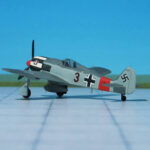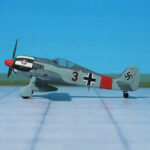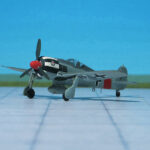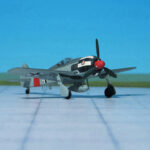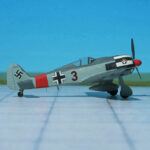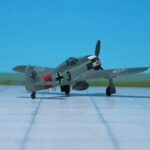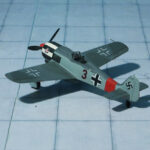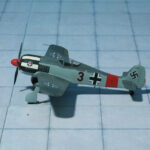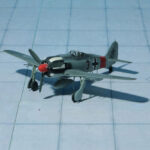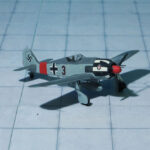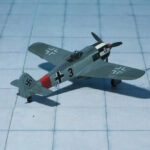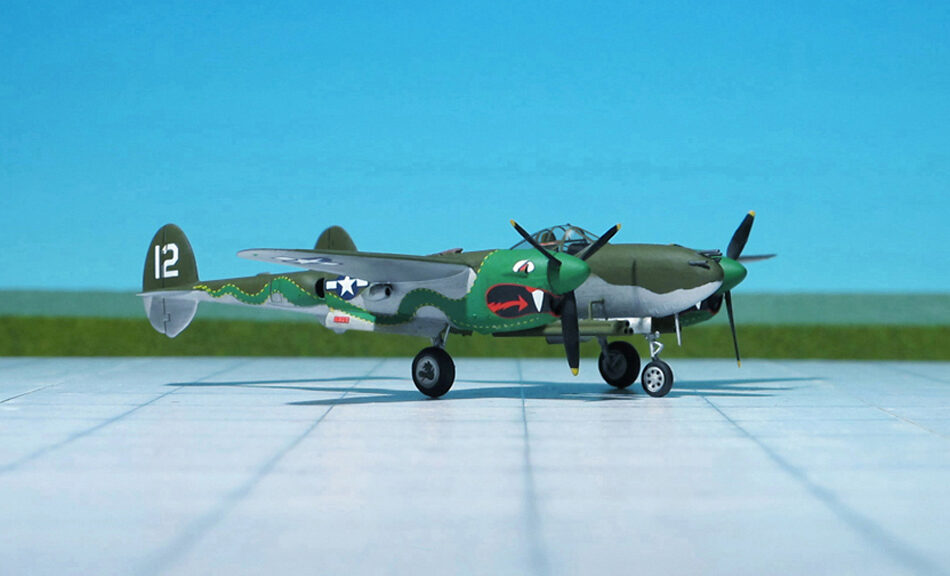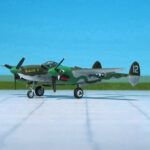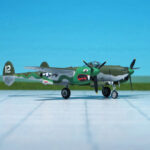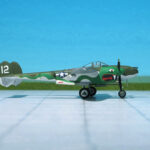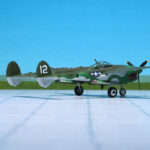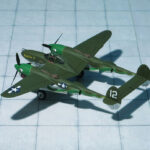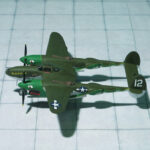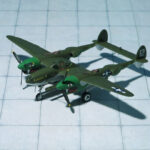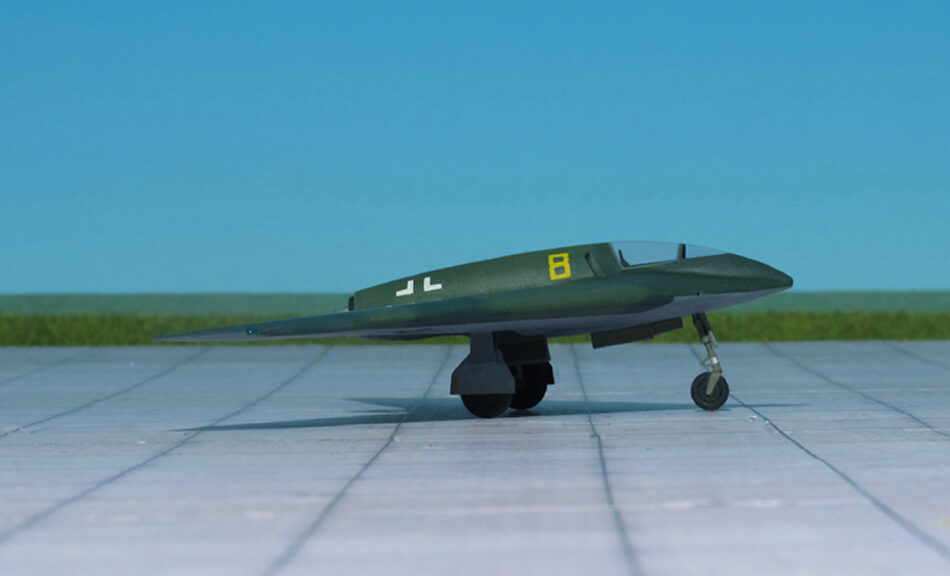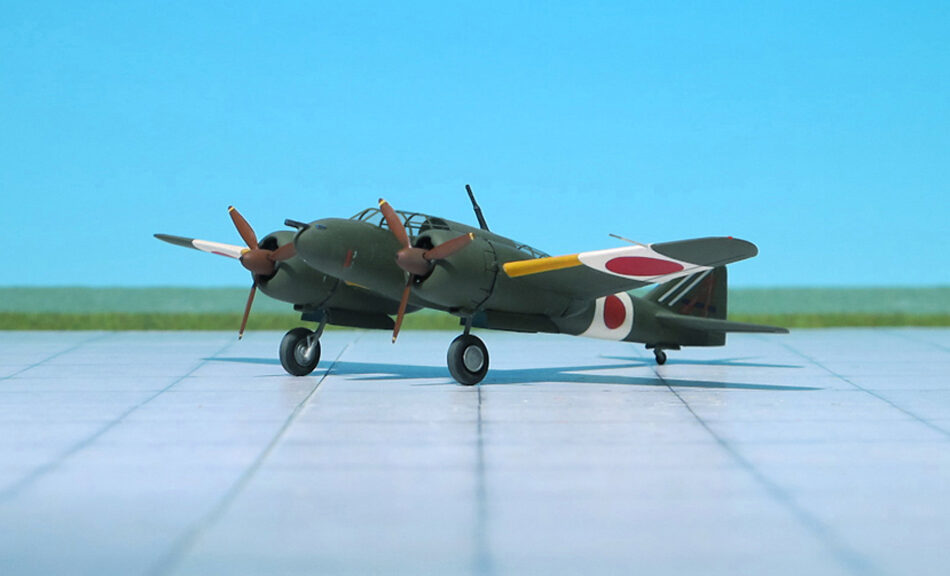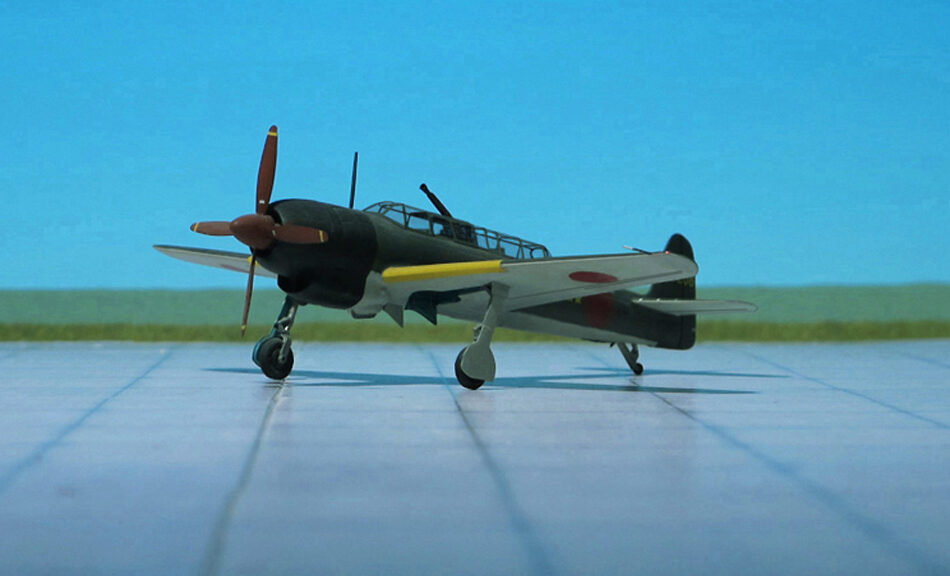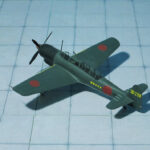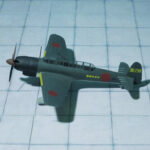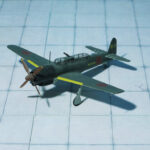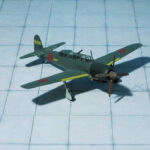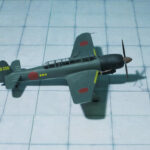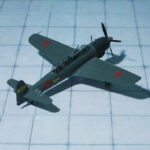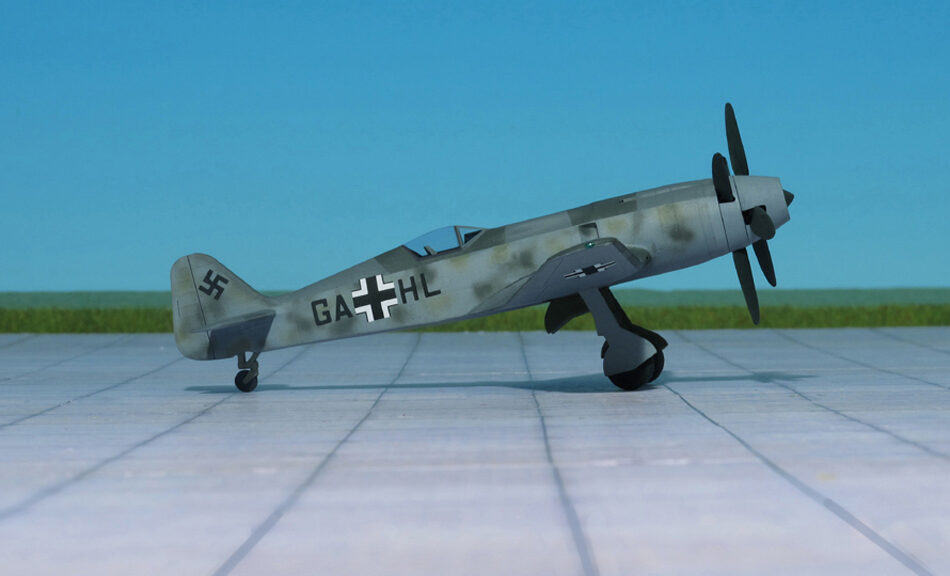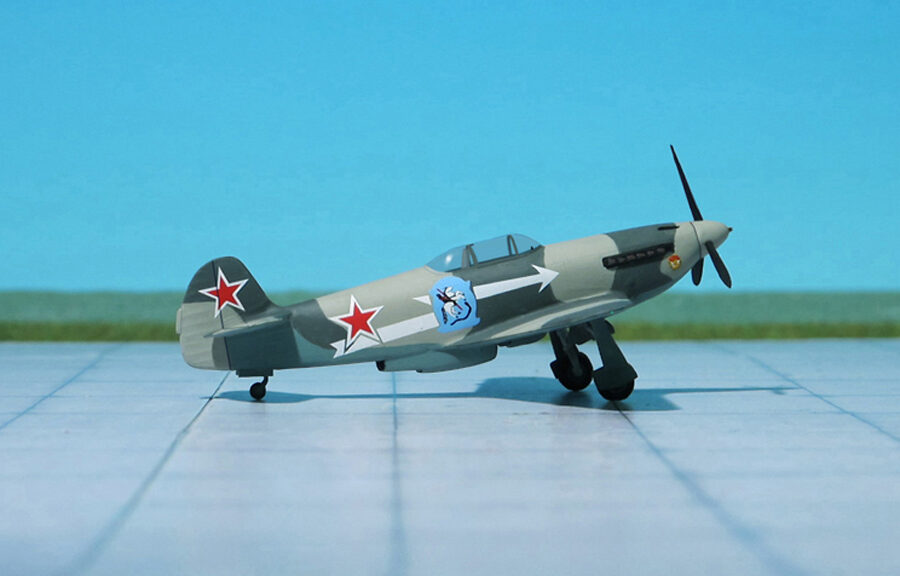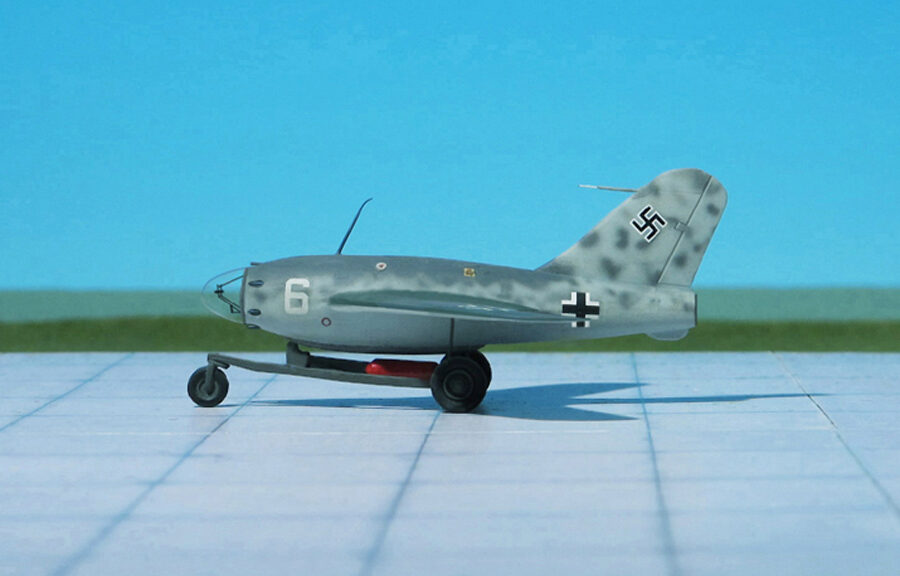TYPE: Fighter, Fighterbomber
ACCOMMODATION: Pilot only
POWER PLANT: One BMW 801D-2 air-cooled radial engine, rated at 1,677 hp
PERFORMANCE: 405 mph at 9,420 ft
COMMENT: The Focke-Wulf Fw 190, nicknamed Würger (Shrike) was a German single-seat, single-engine fighter aircraft designed by Kurt Tank at Focke-Wulff Company in the late 1930s and widely used during World War II. Along with its well-known counterpart, the Messerschmitt Me 109, the Fw 190 became the backbone of the Jagdwaffe (Fighter Force) of the Luftwaffe. The twin-row BMW 801 radial engine that powered most operational versions enabled the Fw 190 to lift larger loads than the Me 109, allowing its use as a day fighter, fighter bomber, ground-attack aircraft and to a lesser degree, nught fighter.
The Fw 190A started flying operationally over France in August 1941 and quickly proved superior in all but turn radius to the Supermarine Spitfire Mk. V, the main front-line fighter of the Royal Air Force (RAF), particularly at low and medium altitudes. The 190 maintained its superiority over Allied fighters until the introduction of the improved Supermarine Spitfire Mk. IX. In November/December 1942, the Fw 190 made its air combat debut on the Eastern Front, finding much success in fighter wings and specialised ground attack units (Schlachtgeschwader – Battle Wings or Strike Wings) from October 1943.
The Fw 190A series’ performance decreased at high altitudes (usually 20,000 ft and above, which reduced its effectiveness as a high-altitude interceptor. From the Fw 190’s inception, there had been ongoing efforts to address this with a turbosuper-charged BMW 801 in the Focke-Wulf Fw 190B model, the much longer-nosed Focke-Wulf Fw 190C model with efforts to also turbocharge its chosen Daimler Benz DB 603 inverted V12 powerplant, and the similarly long-nosed Focke-Wulf Fw 190D model with the Junkers Jumo 213. Problems with the turbocharger installations on the -B and -C subtypes meant only the D model entered service in September 1944. These high-altitude developments eventually led to the Focke-Wulf/Tank Ta 152, which was capable of extreme speeds at medium to high altitudes (469 mph at 44,300 ft. While these “long nose” Fw 190 variants and the Ta 152 derivative especially gave the Germans parity with Allied opponents, they arrived too late to affect the outcome of the war.
The Fw 190A-8 entered production in February 1944, powered either by the standard BMW 801 D-2 or the 801Q (also known as 801TU). The 801Q/TU, with the “T” signifying a Triebwerksanlage unitized powerplant installation, was a standard 801D with improved, thicker armour on the BMW-designed front annular cowling, which still incorporated the BMW-designed oil cooler, upgraded from 6 mm on earlier models to 10 mm. Changes introduced in the Fw 190 A-8 also included the C3-injection Erhöhte Notleistung emergency boost system to the fighter variant of the Fw 190 A (a similar system with less power had been fitted to some earlier Jabo variants of the 190 A), raising power to 1,950 hp for 10 minutes. The 10 minute emergency power may be used up to three times per mission with a 10 minute cooldown in “combat power” between each 10 minute use of emergency power.
The Focke-Wulf A-8/R-1 Zerstörer (Destroyer) had a quartette of underwing-mounted MG 151 cannon (Rüstsatz 1, Field conversion set), the standart twin fuselage mounted MG 131 and wing root-mounted MG 15.
Of the total of 23.823 Focke-Wulf Fw 190 built in all variants 6.655 aircraft were Fw 190A-8.
The Fw 190 was well-liked by its pilots. Some of the Luftwaffe’s most successful fighter aces claimed many of their kills while flying it. The Fw 190 had greater firepower than the Messerschmitt Me 109 and, at low to medium altitude, superior manoeuvrability, in the opinion of German pilots who flew both fighters. It was regarded as one of the best fighter planes of World War II .
The Focke Wulf Fw 190A-8/R-1 shown here belonged to the II. Gruppe (Wing) of JG 1 (Jagdgeschwader, Fighter Group) (Ref.: 24).

